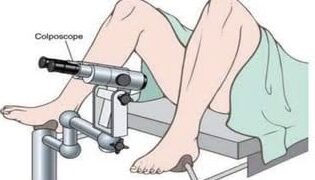The rising cases of women suffering from various virginal infections and diseases are gradually increasing to endanger the lives of both girls and women, a situation that requires global attention as many life-threatening illnesses cause women to suffer in excruciating pain.
Recently, my encounter with victims battling to recover from diseases related to virginal infections in women reveals how many girls and women battle for a healthy life amidst unbearable suffering from pains capable of consuming life.
However, a healing lady, Hafstat Lawal in Kaduna, told Daily Episode that her suffering “started with little pains, sometimes while urinating and during her monthly cycle. “I thought they were just random pains that would go away with time, but with the constant pains, I battled every moment of my menstrual periods, which was frightening.” I began to wonder and seek solutions.
Victims Account
A few months after experiencing painful urination, I noticed that I would urinate almost every twenty minutes. They were short, painful, and had little streaks of blood. Of course, the first thought was, “I had an infection.” This discovery triggered me to go to a pharmacist, who prescribed some antibiotics. He asked me if I had “itchiness, painful urination, and if my pelvis were hurting,” all of which I replied in the affirmative except for the itchiness. No, I didn’t experience itchiness, after which he gave me some antibiotics and vitamins.
However, after a day or two of taking them, I felt better, and I was happy it wouldn’t come back.
Well, after a year or less, it did come back.
This time around, it came back with great force. It was worse. I find it difficult to sleep sometimes due to the pains; and also scared to urinate because of the fear of pain that is sure to come with it.
As a result, my life was completely in pain—I was always crying and even controlling my meals for fear of enjoying what would end up as pain. So the medical
However, I visited a hospital far away from where I lived. Even though I wasn’t shy about getting help, I was scared of the stigma that might come with the discovery. I never wanted my friends to find out; they would mock me.
The doctor in charge asked me for my symptoms, all of which I recounted. I believe he has had similar patients to me because he would sometimes describe how I was feeling. I was happy he got everything right, and I had hope of getting the proper help I needed.
Hafsat further narrates that the doctor, she met ran some tests on her while waiting for her results. However, she never revealed the test result, which I believe was due to the stigma she was once scared of.
He wrote some drug prescriptions and also directed me to the injection room. I was given some injections and also asked to get my drugs at the hospital pharmacy. The nurse then told me I would take the injections for 5 days.
Although there were no noticeable changes during the first two days of treatment. But I began to feel better on the third day, and I eventually recovered completely after two weeks of treatment. She also stated that she is extremely conscientious about her hygiene, but she wishes there was more awareness about menstrual hygiene and infections in general. She added
Similarly to Hafsat, Lola, a 14-year-old girl, struggles with pain and healing from painful urinary routines, as well as the constant menstruating pens that are timely and monthly at her specific time.
According to her father, Mr. Segun, Lola started with minor complaints of painful urinary. “She would cry and tell her mom she was scared because the pains were too much for her,” said Mr. Segun. A few months later, after we took her to the hospital, she was eventually treated, healed, and started to live normally with no pain. “Unlike Lola, who was always scared and uncomfortable during the period she was battling to survive this pain, eventually a new life began with excitement,” Mr. Segun stated.
After the painful period, both her mother and I began to take precautionary measures to protect our daughter from future contamination by virginal infections and related conditions.
Suddenly, Lola became cautious about sanitizing her toilet. She was dedicated to cleaning her underwear and sterilizing them and ensuring she never wears the same underwear to sleep. She was that careful amid fear of virginal infections
However, approximately seven months after the first encounter, we noticed that she had started exhibiting some of the symptoms we had during her first experience. Mr. Segun continues
Lola’s class was not the closest to the restroom, according to the information received from her school, and while her condition worsened, she occasionally found it challenging to request her teacher to allow her to go to the restroom. I presume that was done out of shame. Unexpectedly, she would typically soil her uniform before using the restroom, which is not common for a 14-year-old, especially among her peers who knew nothing about her condition.
Therefore, as a result of these reports and some other obvious symptoms we had noticed, Lola was taken to the hospital, where she met with a gynecologist and underwent a series of tests. The gynecologist prescribed medications and some guidelines that would help prevent the recurrence of the infection. He added.
While Lola was placed under proper care by both the health expert and her family, both hope Lola will recover completely.
Solutions for virginal infections and painful urination
For the lingering issue, it is noticeable that both victims have some things in common, which are painful urination, pelvic pain, as well as bleeding. All of these symptoms can be attributed to the presence of a bacterial infection. But it is important to know that some infections share the same symptoms. However, the only way to properly diagnose is through appropriate testing and screening.
However, addressing the menace requires precautions capable of preventing women from contracting infections: constant use of clean water and antibacterial soaps while washing underwear, strengthening menstrual hygiene, and total avoidance of public or unhygienic toilets
Research by the American College of Obstetricians and Gynecologists (ACOG) recommended that a pad should be changed at least every 4 to 8 hours; how often the pad is changed depends on one’s flow, the type of pad one uses, and what makes you feel comfortable.
Therefore, anyone with signs of discomfort, especially in the pelvis area, should visit a hospital to meet a specialist (gynecologist). They are in the best position to conduct the appropriate tests and prescribe medications that would help.


































